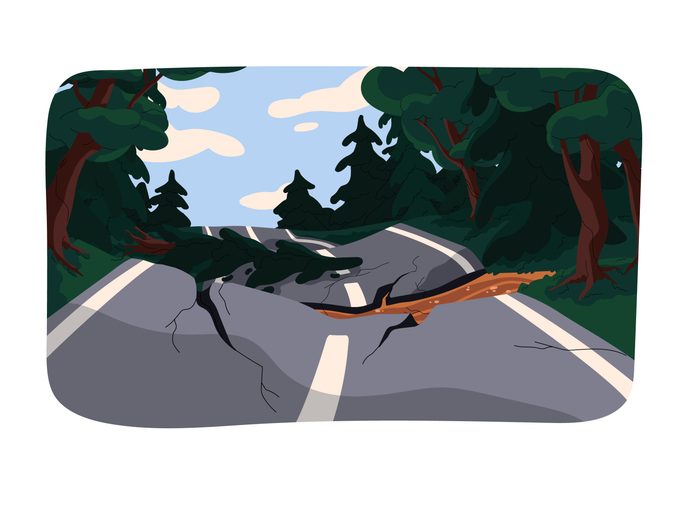
How user experience is becoming the defining advantage in a fractured SaaS landscape
The cracks in the cloud
For two decades, SaaS — Software as a Service — was untouchable. It changed how we work, how we buy, how we scale. It disrupted dusty software licensing models and turned enterprise tools into something sleek and sexy. Pay monthly. Cancel anytime. No more installs, updates, or IT desk calls at midnight.
But now? The sheen is wearing thin.
For SaaS product leaders, this shift isn’t just a business challenge. It’s a design opportunity. To adapt, they must rethink how UX strategy aligns with evolving customer expectations, delivery models, and the very definition of what software-as-a-service means.
The data is hard to ignore. According to Winning by Design, SaaS growth rates have been slashed in half since 2021. Customer acquisition costs are up by 1.5x. Net Revenue Retention is in a nosedive. The average number of SaaS apps per company dropped from 130 to 112 in 2023, the first time in over a decade that number has fallen. Worse yet, companies report wasting more than $135,000 annually on unused software licenses.
So what happened?
Turns out, the SaaS gold rush may have gotten ahead of itself. A “grow at all costs” mentality led many companies to “blitzscale” without securing strong go-to-market foundations. As the economic sugar high wore off, SaaS leaders found themselves staring at an increasingly skeptical customer base, budget cuts, and AI-powered outreach campaigns that felt more like spam than sales enablement.
It’s not that people no longer need software. They just need software to work for them — in ways SaaS may no longer fully deliver.
TL;DR:
SaaS is evolving — from subscription-only to usage-based, modular, and AI-native models. Product leaders must rethink UX as a business strategy, not just an interface layer. This article offers key UX strategies to help SaaS companies reduce churn, build trust, and thrive in an era of rapid transformation.
SaaS is dead — Long live SaaS?
Let’s not bury the model just yet.
The SaaS market is still expected to hit $250.8 billion in 2025. Some estimates stretch that figure north of $900 billion by 2030. In fact, SaaS isn’t dying. It’s molting. Shedding its legacy pricing, delivery, and even interface patterns to adapt to a future that demands more nuance, more personalization, and — critically — more user-centricity.
This evolution is happening on multiple fronts.
1. The pricing pivot
Traditional subscription models are under pressure. In their place: usage-based pricing (pay-as-you-go), hybrid models (subscription + usage), and even a rebirth of “buy-once” software for users who don’t want another monthly charge on the company card. Think AWS-style billing or OpenAI’s tiered usage plans.
2. The rise of vertical SaaS and microapps
Blanket platforms are giving way to specialized tools — vertical SaaS built for narrow industries, and Micro-SaaS focused on niche problems. Think of it as the “unbundling” of SaaS: less Swiss Army knife, more scalpel.
3. The DIY revolution
No-code and low-code platforms are turning average employees into developers. Meanwhile, foundation models like GPT and Claude are being used by businesses to roll their own tools. Klarna even replaced Salesforce and Workday with in-house solutions.
The message? If SaaS can’t deliver what we need, we’ll build it ourselves.
That’s why UX strategies for SaaS product leaders must account for increasing customization — empowering users without overwhelming them.
4. Decentralization and open source
A growing number of teams are ditching proprietary SaaS for open-source alternatives like Webstudio (vs Webflow), Rowy (vs Airtable), or Zulip (vs Slack). Others are exploring decentralized apps (dApps), shifting control from platforms to users.
UX strategies for SaaS product leaders

Navigating the storm with UX as a compass
Here’s where it gets interesting.
In a fragmented, post-SaaS world — where software is increasingly tailored, decentralized, and unpredictable — UX strategies for SaaS product leaders are the common denominator. It’s the strategy that ensures that no matter the model, users can still get their jobs done without pulling their hair out.
The role of UX is expanding… and fast.
UX strategy must broaden
We’re not just designing isolated apps anymore. We’re designing ecosystems. Interfaces must flex across delivery models. Teams must map user journeys that stretch across cloud platforms, APIs, integrations, and third-party plug-ins.
Great UX now means orchestrating seamless experiences in an increasingly disjointed environment.
User research is the new due diligence
Whether users are dealing with AI copilots or open-source tools, their expectations around control, data ownership, interoperability, and offline access are shifting.
UX research must uncover these new pain points:
- Do users trust AI-generated suggestions?
- Will they pay more for transparency and control?
- How do they navigate app fatigue?
- What drives tool abandonment?
Old assumptions are dead. User needs are fluid. Only continuous research can keep pace — making it one of the most critical UX strategies for SaaS product leaders navigating constant change.
Designing for intent, not features
The interface of tomorrow won’t ask users to click through endless tabs or toggles. It will ask: What do you need to do? Then, it will do it.
This is the promise of intent-based UX — where AI anticipates goals and eliminates friction. It’s one of the most forward-looking UX strategies for SaaS product leaders aiming to make software truly adaptive.
It’s not just smart; it’s human-centric. The challenge? Designing it in a way that still feels intuitive and empowering.
Where UX meets innovation
In the lab, in the field, and in the wild, UX is already reshaping what post-SaaS looks like.
- DIY AI platforms are integrating intuitive, drag-and-drop interfaces so non-developers can spin up custom GPT-powered assistants.
- Buy-once software like Once.com is redefining user expectations about pricing, updates, and ownership, with UX playing a key role in reducing friction around onboarding and maintenance.
- dApps are solving for wallet confusion and blockchain onboarding with progressive disclosure, contextual tooltips, and integrated user education.
- Serverless apps are making performance seamless by reducing latency and error states — key usability concerns as architecture becomes invisible to users.
And across all of these models, AI is not just a feature — it’s baked into the interface. Navigating this shift requires thoughtful UX strategies for SaaS product leaders who must balance innovation with usability.
We’re talking about predictive UX, voice interfaces, natural language processing, and real-time assistance. But AI introduces new friction too: trust, explainability, control. UX is tasked with making the invisible visible without overwhelming users.
Designing for the next era
So, what happens now?
UX designers, product leaders, and strategists must think beyond the page. For SaaS product leaders, these UX strategies are essential.
These shifts are reshaping roadmaps. The following UX strategies for SaaS product leaders can serve as a guide for designing in this new era.
We must:
- Design for data ownership and transparency.
- Build experiences that function offline and sync intelligently.
- Create modular, interoperable UIs for hybrid ecosystems.
- Balance automation and agency so AI feels helpful, not hijacking.
- Uphold ethical and inclusive design as personalization goes deeper.
Best practices — like clear navigation, consistent UI, effective onboarding — still matter. But they’re table stakes. The bar is higher now. The surface area of UX has expanded.
The experience isn’t just the product. The experience is the business model.
Frequently asked questions about UX in SaaS
Why is UX more important now in SaaS than before?
Because users have more choice, less patience, and higher expectations. UX is now a differentiator that drives retention, reduces churn, and communicates value.
How is AI changing UX for SaaS products?
AI is shifting UX toward intent-based interactions and real-time assistance. But it also creates new challenges around trust, explainability, and control — all UX concerns.
What is intent-based UX?
It’s a UX model that anticipates a user’s goals and proactively supports them — like AI suggesting the next action or completing steps without friction.
How can UX strategy address decentralized and open-source SaaS trends?
By focusing on modularity, transparency, and user control. Good UX makes complex architectures (like dApps or open APIs) accessible to non-technical users.
What UX metrics should SaaS leaders track now?
Beyond NPS or CSAT, focus on activation rate, time-to-first-value, task success, churn reduction, and user trust indicators (especially for AI-infused tools).
The end (or beginning) of SaaS
Maybe SaaS isn’t going away. But the version we knew—the cookie-cutter subscriptions, the bloated feature sets, the inflexible tiers—is on the ropes.
What’s rising in its place is less a monolith and more a mosaic: usage-based platforms, modular ecosystems, open-source projects, AI-native tools. Navigating this complexity will require more than just good code. It will require great design.
UX isn’t just reacting to this shift. It’s defining it.
In the end, the future of software belongs to the builders who put users first — and the designers who never stop listening. For SaaS product leaders, embracing strong UX strategies isn’t just smart design. It’s smart business.
Ready to rethink your SaaS experience?
We help SaaS leaders apply user-centered strategy to drive retention, adoption, and business growth. Talk to our UX strategy team.











